September 2, 2005
Where Was I?
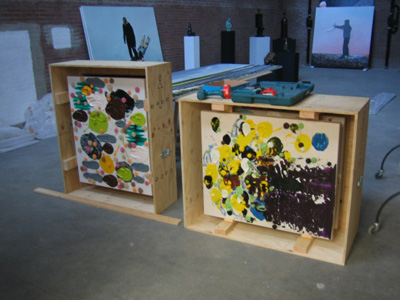
Oh yea.
The worked arrived in perfect shape, no split seams of the new crate design, no fork lift tines skewering holes, no broken fixtures within that would allow the paintings inside to bang and smash the delicacies that are core values for my work. This, a first sign of a great week.
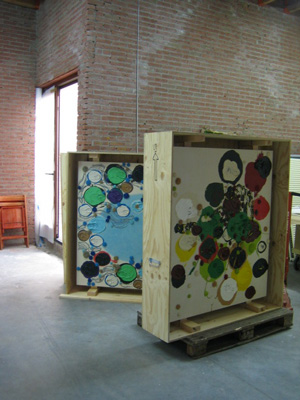
(BLOGPOST IN PROGRESS)
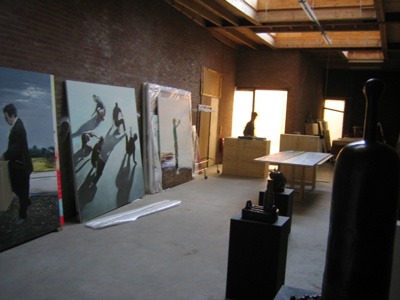
These shots were taken in the backroom of Tanya's gallery. I really liked these spaces, the light, the brick. There's a character to Dutch techtonics (the way people put things together) that was particularly vivid after a time spent in Spanish Catalunya. There is a completeness and purposefulness that is present in the built environment everywhere, where people usually see and even where they can't. I see this in every course of bricks, as roofs hang into eaves, as walls meet floors, as floors become urban infrastructure.

Up against the wall was the work of Koen Vermeule. I loved seeing this sort of show after his show (the previous June). Poking around, I note how he is super loose within the schema of representations that are probably video projected onto canvas. Check out the details here, here and closer still, here.
Another kind of painting by Rachid Ben Ali was leaning against the walls. Unfortunately, I only caught this blurred shot:
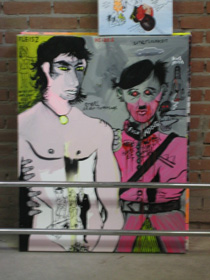
Here's the same image, large despite my shakey camera hand. I should have shot more of his canvases to show you more of this resurgent neoexpressionism filtered through what I take to be the Dutch son of assimilating Muslim immigrants. Both artists are getting attention there. (I saw a large R.Ben Ali at the Stedelijk Museum.)
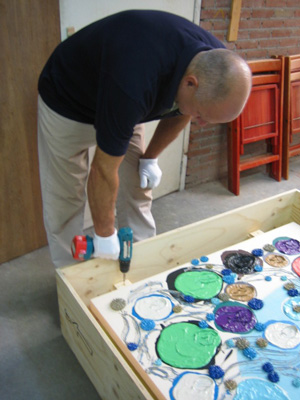
Gerard Polhuis installed the show.
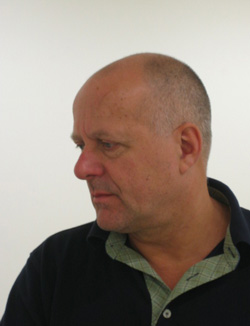
An artist too, Gerard makes these hand drawn, laser cut painted steel Calder meets Miro mobiles-but-not with sprites of Pittman and Kara Walker as art nudges into design in terms of fixtures of lighting and near chandeliers.
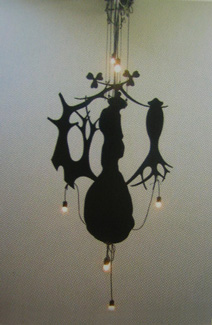
...!
Where was I?

Long and linear, Tanya's space is cool because it links the room of the street with an internal roofed and screened light and air filled volume inside. Just inside this little redwood decked courtyard, sliding doors open the back room seen earlier here in this post.
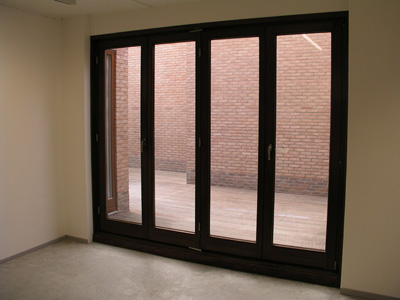
The install of a show is always interesting. For example, Miguel Marcos and his number one Alberto sweated suble dynamic cross relational arrangements for days. Seriously, Alberto would move a painting two inches because as he said: "One will have to live with this for two months, after all."
Muy bien, Tio.
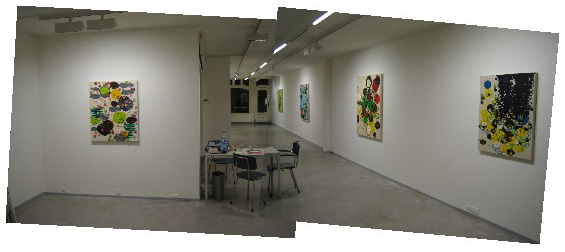
Tanya asked me for my thoughts about the installation. Earlier I had explained how I thought that as artwork leaves the studio, it is in constant motion either towards the landfill or the museum. In such a state, the dominion of total artistic control and intention diminishes radically and subsequently hazards the interpretation and intentions of others in the world. Over time, if the nature of the work shines and the caprice of fate allows, people will work to recover and re-member the original nature of those intentions and visions.
Ojala.
Therefore, I welcome the direction of the gallery in the installation for the sake of the implications of this "constant motion" theory (landfill/museum). One implication is that the enlargement of the imagination and fire of creativity is not the sole province of the artist but extensive throughout including all the people who encounter the original artwork. We are not mere witnesses but active participants. When we see a Mona Lisa, for example, the fire that burned in the figure of Leonardo burns in us too.
In a wider definition of artmaking, art is choosing. A painter choosing among colors on a pallette is the same as a collector choosing artwork to live with, as is a gallery in choosing what artists to represent... this definition is extendable to everyone in all stations of life.
So it was good news to see Tanya making invested choices in the installation. interestingly, it was Gerard who was extrapolating several variations as we positioned work against the wall over and over again. A strong idea was deposed for a stronger one and then after that, a different strategy would be proposed and off we would go in choosing among another set of good and better options.
Tanya still asked me what I thought. What is important to me is that there is a story that can be told in the sequence between paintings. Often, I would tack like a sailboat, going from one direction to the opposite to challenge assumptions and to confirm over and over agian that "consciousness comes from an awareness of contrast".
As the afternoon grew long, one particular installation persisted and we were all satisfied. Tanya wanted to jump into the car to see a museum and have dinner with collectors. Time was tight. I was beginning to learn firsthand how Tanya likes to pack her schedule with lots of experiences. If we hurried, we might have an hour in the Kr?ller-M?ller museum. Gerard stayed behind to hang the work.
Cool.
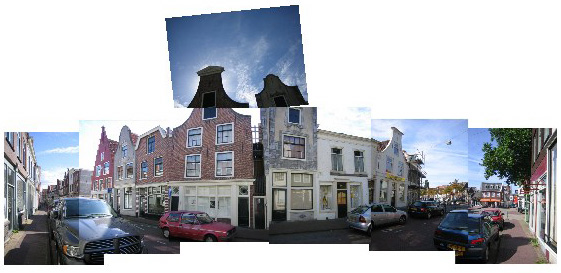
***
Kr?ller-M?ller Museum

After about an hour's drive East of Amsterdam, we arrived at the gates of the Hoge Veluwe National Park and the Kr?ller-M?ller museum. I had no idea how fabulous this place was. A great museum with a wonderful collection that has an interesting history, situated in the center of a huge and multifaceted park.
My use of the camera is too pathetic to try to do any justice in describing this place. A proper appreciation would require at least a weekend there: a day for the museum and a day for the park. I wonderful place for a family outing.
From the website:
National Park De Hoge Veluwe is one of the Netherlands' oldest and largest national parks. It consists of no less than 5,500 hectares of woodland, heathland, lakes and driftsand. Together with the Kroller-Muller Museum and the sculpture garden it offers a unique combination of nature, art and architecture.De Hoge Veluwe is a park where visitors can still find plenty of space and peace. Where you can walk undisturbed for hours, or cycle using one of the free white bicycle. It is home to many endangered plant and animal species. Have you ever come face to face with a red deer, moufflon or roe deer? It can happen at De Hoge Veluwe!
Alongside peace and space, there is also a lot to do in the Park. To protect the peacefulness, the activities are concentrated in the central area of the park. A wide range of sporting, cultural and educational activities are regularly organised for young and old.
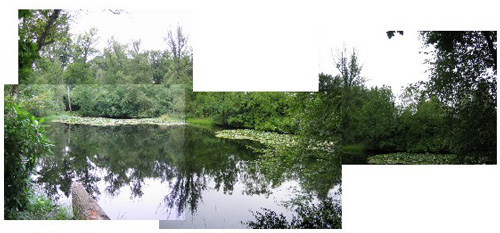
The free bikes are fantastic. A backpack and a picnic with friends would make for a great day.

As for the museum:
The Kroller-Muller Museum is world-famous for its large collection of paintings by Vincent van Gogh: it features a magnificent selection of his work. The museum also houses impressive works by George Seurat, Pablo Picasso, Fernand Leger, Piet Mondriaan and many other leading artists.Temporary exhibitions are regularly staged featuring works from the 20th century and contemporary art, and retrospectives are staged. These are devoted to important artists, with works from the Museum's own collection on display. Works from the Museum's sculpture collection are also regularly displayed in rooms in the new wing of the Museum. These include works by Donald Judd, Alberto Giacometti, Sol LeWitt, Bruce Nauman and others.
Another famous feature of the Kroller-Muller Museum is the sculpture garden - the largest such garden in Europe. A magnificent collection of sculpture is displayed in an unusual setting, surrounded by nature. Various artists from the end of the 19th century to the present day are presented: Auguste Rodin, Henry Moore, Barbara Hepworth, Richard Serra, Mario Merz, Jean Dubuffet and Claes Oldenburg.
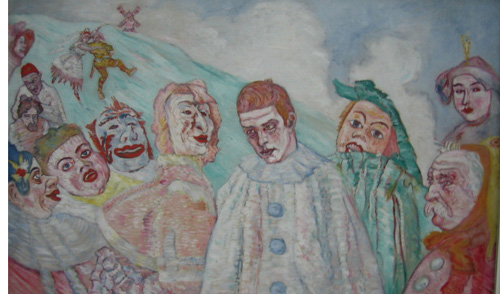
And then I turned the corner and I was stopped by a few Ensor paintings. I google:
The Germanic spirit that so violently separated the self and the material world had a profound effect on its artists: witness the tortuously emotional lives of Vincent van Gogh and Edvard Munch. A third to suffer a similar fate was the Belgian, James Ensor, who wrote, "I was born at Ostend, On April 13, 1860, on a Friday, the day of Venus. At my birth, Venus came toward me, smiling, and we looked into each other's eyes. She smelled pleasantly of salt water."The mysteries of the sea were to continue to influence Ensor's art but his conceptions of the world around him would not remain so pleasant. His parents ran four souvenir-curio shops in the seaside resort of Ostend catering to the English Channel-crossers as well as to the continental Europeans and peasants from the countryside. Ensor's childhood was spent idling away his time, roaming the dunes of the old port. His childhood was crammed full of strange objects. "In my parent's shop, I had seen the wavy lines and the serpentine forms of beautiful seashells; the iridescent lights of mother-of-pearl, the rich tones of delicate chinoiseries." In the attic in which Ensor made his studio is where his parents kept damaged and unsold objects from the shop. These objects, along with the masks Ensor's parents sold at religious carnivals, became the sources for his art. In 1877 Ensor entered the Brussels academy where he stayed for three years, drawing and painting. He returned to Ostend, and by 1884 was painting the masks and skeletons which made him famous, and which more and more evidenced a profoundly morbid turn in his personality.
Masks, ghosts and demons people his art in canvases that otherwise are bathed in gentle light and vibrant colors. Although the objects of Ensor's canvases are, for the most part, inanimate, they give the impression of having been somehow surprised in the midst of some diabolical activity. From his early twenties Ensor's work evokes the suspicion with which he seemed to regard both his fellow man and the inanimate objects that surrounded him. Ensor was completely isolated in the hallucinatory world of his creation, an isolation that is revealed in his portrayal of the human figure behind a mask, which revealed all of his baser and more destructive aspects. His art is filled with images in which men exist only as phantoms or ghosts, eroded by death or contained in a peculiar experience of space-imaginary, shriveling into shallow areas, rushing again at a great distance as something new and monstrous. These themes are not artistic exaggerations, as they would be in the later surrealistic paintings of such artists as Salvador Dali, but are devised, rather, to clarify a real situation, compulsive projections of mental states.
***

I was snapping pictures on the fly, making mental notes to return again one day. Then we turned the corner and we stumbled into a room of Van Gogh's.

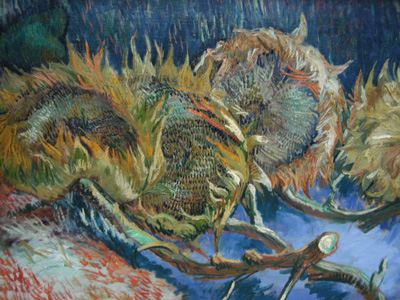
I snapped pics, feeling a little foolish for rushing by so many wonders. (A detail here.)
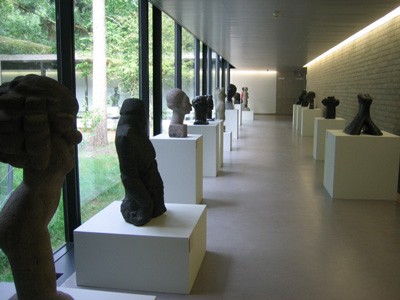
And as the museum personnel began to herd us out, some sculptures caught my eye. There is a sculpture garden of some note thereabouts. More here, here, and here.
That evening, we had dinner with collectors. I was surprised to find an old painting of mine on their walls, I hadn't focused onthe possibility that they would have been a collector of my work. it was nice to see it again. The evening was very interesting and it was great to see their collection, a giant room full of the history of Dutch and international art hanging in three large racks over anti static floors, state of the art security and climate control equipment.
I came away blinking in wonder at the historical depth of quality of Dutch painting.
***
Where was I, indeed.
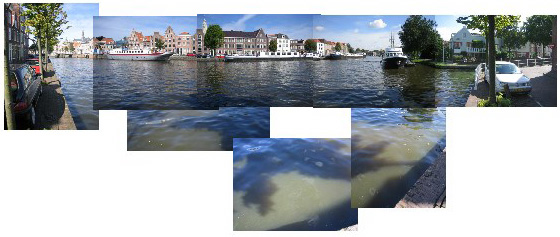
The next day, I wa able to kick out and see a little of Haarlem before the opening that evening. These shots were taken just around the corner from the gallery.
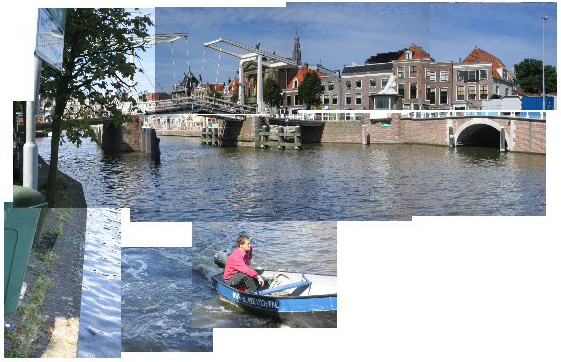
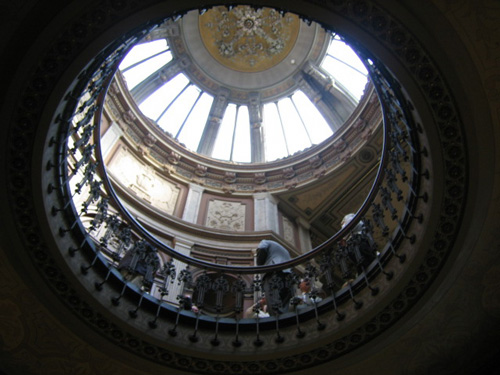
There wasn't much time before the opening, but luckily the oldest museum in the Netherlands was nearby, the Teyler museum.
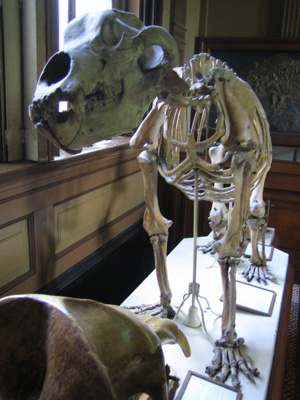
The link above is in Dutch, so I Wiki for more:
Teylers Museum is a natural history museum in Haarlem, the Netherlands, and the oldest public museum in the country. The museum hosts a collection of fossils, minerals, historical scientific instruments and works of art.
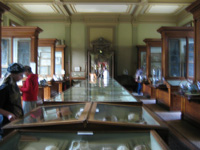
The combination of artifacts and art... very interesting. The Teyler is a museum of the history of museums too.
I wonder if we could mix the contents of the L.A. County art museum and the George C. Page Museum next door?
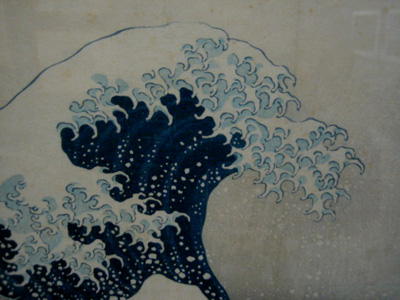
This, Hokusai's "In the Hollow of a Wave off the Coast at Kanagawa" was included in an exhibit in the history of volcanology. Art was mixed with geologic samples, models and ancient journals documenting volcanic eruptions.
I took my time there until shortly before the opening.
***
Where was I?

Ah yes, the opening.
I had my camera in my pocket but... I just can't pull it out and flash it around as I am meeting and greeting at an opening. It draws a pall of self consciousness over the ocassion, just at the critical moment when I am either encountering new people or tuning into a conversation to handle the issues people bring up in reference to the painting.
Plus, there is a fair amount of business happening therein and while I am a little nutty, I'm not so crazy as to broadcast the delicate innards of the transactions, people and commercially related chit chat that goes on in an opening.
Plus, there's a thing about converting life into art, a kind of thing that drove Dave Hickey to leave fiction for art criticism in the first place. The problem is that if you are constantly digging life for art material, life starts to feel like an open pit mine.
But I can and should write that I met some very wonderful people that night.
***
Where was I?
Oh yes, Amsterdam.
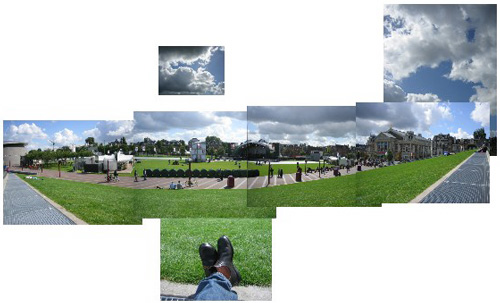
My favorite activity especially in this part of Europe is to simply walk the streets. And in the height of summer, these Dutch streets are one big party day and night. This location at Museum Plein is one such site of many. Sitting atop a Emilio Ambasz type of subcutaneous incision and insertion of a grocery store chain, it was a perfect combination of mixed uses: buy your picnic below and camp out on a grassy knoll to watch the city trickle in for the big party.
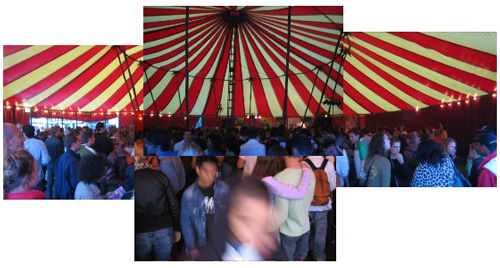
Getting into town via rail from Haarlem takes about fifteen to twenty minutes. After doing this and that at the gallery in the mornings, I had only an afternoon for the pilgramage to the museums. So the salve for the wounds of not soaking in the waters of high culture is a stiff injection of pop culture ( EU rap in this photo). It was pretty damn good. I wanted the CD, no such luck. At another venue, cumbias and Latin Salsa. Muy bien, Tio.
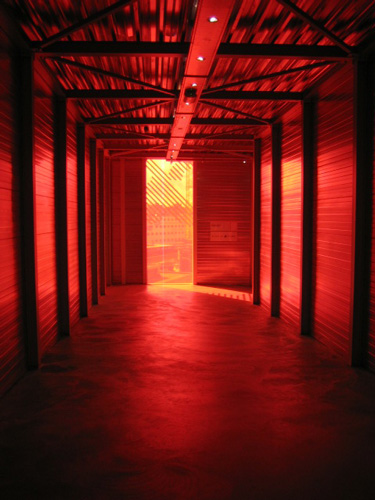
On this partcular evening, I had a dinner appointment (which turned out to be fascinating) so therefore I had just enough time to visit Theo Van Gogh's murder site and hoof over to the Stedelijk.
The murder of Theo Van Gogh should be the Pearl Harbor for the creative community, although for me, the destruction of the Bamiyan Buddhas crossed the line long ago.
The Stedelijk is in a temporary space, so I understand, and it reminds me of LA's Temporary Contemporary ...although Frank Ghery's hand was so good when restrained that the temporary became permanent. Best remembered at the Stedelijk: Marlene Dumas (check it out, her site is interesting), a big Rachid Ben Ali, A Peter Saul, an R.B. Kitaj, a big room ful or two of Michael Majerus.
***
Where Was I?
Oh yea, I flew to Berlin to see Andr?'s new space.
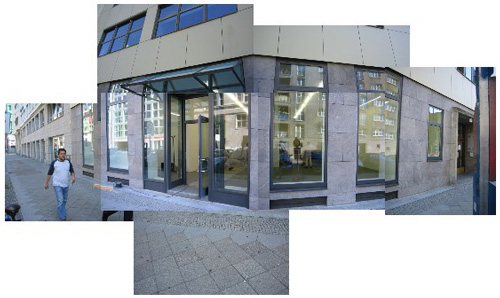
(BLOGPOST IN PROGRESS)
Posted by Dennis at September 2, 2005 8:32 AM
Leave a comment